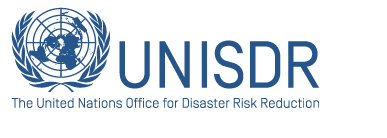The Plan also includes the protection of livelihoods in disaster-prone communities, development of early warning systems, hazard
The Plan also includes the protection of livelihoods in disaster-prone communities, development of early warning systems, hazard mapping, contingency planning, and coordination among institutions and stakeholders before, during, and after an emergency, among other activities.
Ecuador is implementing three projects that will directly benefit over 70,000 people. The first one, "An Integrated Urban Risk Management System in Guayaquil", is being implemented by CARE, in partnership with Guayaquil's Decentralized Autonomous Government. The second project, "Support for Risk Management Policy Implementation in the Education Sector," is being implemented by Plan International and UNICEF in the Metropolitan District of Quito. And the third one, "Strengthening, Training, and Research to Reduce Vulnerability by Designing Effective Local Disaster Risk Reduction Actions" is being implemented by the United Nations Development Programme (UNDP) in seven Ecuadorian municipalities.
The Regional Planning Workshop for the European Commission's 2013-2014 Disaster Preparedness Programme in South America had two main goals. The first goal was to develop synergies among partners, counterparts, and authorities involved in the Plan's implementation to help achieve a more rapid implementation of the Hyogo Framework for Action (HFA 2005-2015) and its post-2015 follow-up instrument. The second goal was to discuss the mechanisms that will contribute to the implementation of the Action Plan, based on a coordinated and common vision of disaster risk reduction (DRR) in South America.
The meeting was convened by the United Nations Office for Disaster Risk Reduction (UNISDR), the United Nations Educational, Scientific, and Cultural Organization (UNESCO), the International Federation of Red Cross and Red Crescent Societies (IFRC), Ecuador's Secretariat of Risk Management (SGR), and Practical Solutions, and was sponsored by The European Commission's Directorate-General for Humanitarian Aid and Civil Protection (ECHO). Mora than 80 participants represented different regional, national, and local sectors from Argentina, Bolivia, Brazil, Chile, Colombia, Ecuador, Paraguay, Peru, Uruguay, and Venezuela.
Editor's Notes:
• Disaster Risk Reduction in South America
Given the growing impact of disasters in recent years, it is of paramount importance to foster disaster risk reduction as a linchpin in ensuring the irreversibility of achievements in sustainable development in the countries of South America. Due to the region's geographical, social, environmental, and economic characteristics, it is highly prone to being affected by natural hazards, which have been exacerbated lately by growing climate risk. During the High-level Conference of Disaster Risk Reduction Authorities, of the Union of South American Nations (UNASUR), held in Lima in April 2013, it was decided to create a "High-level Group for Integrated Disaster Risk Management." In taking this initiative, UNASUR is supporting several international documents and frameworks, among them the "Hyogo Framework for Action 2005-2015: Building the Resilience of Nations and Communities to Disasters," adopted by the United Nations General Assembly.
• DIPECHO Programme
Every year, floods, earthquakes, volcanic eruptions, tsunamis, hurricanes and drought kill millions of people and cause incalculable economic losses. This is why disaster risk reduction (DRR) is increasingly becoming a priority both for the European Union and for the South American governments, which recognize the links between disaster risk, climate change adaptation and sustainable development.
Contributions by the Directorate-General for Humanitarian Aid and Civil Protection, ECHO, enable concrete actions at the community and municipal level, basing their actions on emergency response in crisis situations and the preparation of authorities and communities in the face of disasters.
The European Commission's Directorate-General for Humanitarian Aid and Civil Protection (ECHO), through its Disaster Preparedness Programme, known as DIPECHO, seeks to reduce the negative impact of catastrophes through prevention activities and by building the response capacity of authorities and affected communities.
Since 1992, ECHO has provided humanitarian aid to regions in need, demonstrating a concrete expression of the fundamental values of the European Union: solidarity with the most vulnerable populations, respect for human dignity, equality and tolerance.
• DIPECHO Action Plan 2013-2014
This Action Plan includes 4 regional projects coordinated by the UNISDR, UNESCO, IFRC and Practical Solutions, as well as 24 national projects that benefit Argentina, Bolivia, Brazil, Chile, Colombia, Ecuador, Paraguay, Peru, Uruguay and Venezuela, and two bi-national projects focused on drought in Bolivia and Paraguay, implemented by 55 partners and 9 consortia including CARE Netherlands, OXFAM, Plan International, Welthungerhilfe, FAO, UNDP, CARITAS France, the Finnish Red Cross, Action Against Hunger, the Dutch Red Cross and COOPI, among others.
The DIPECHO Action Plan for South America prioritizes, among other things, implementation of the Hyogo Framework for Action (HFA 2005-2015). The HFA is the most important global blueprint for disaster risk reduction. It was adopted by the UN member States, and its main goal is to build the resilience of nations and communities to disasters, in order to achieve the substantial reduction of disaster losses, in lives and in the social, economic and environmental assets of communities and countries.




